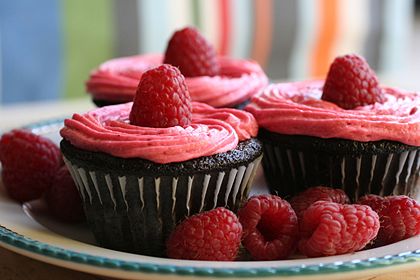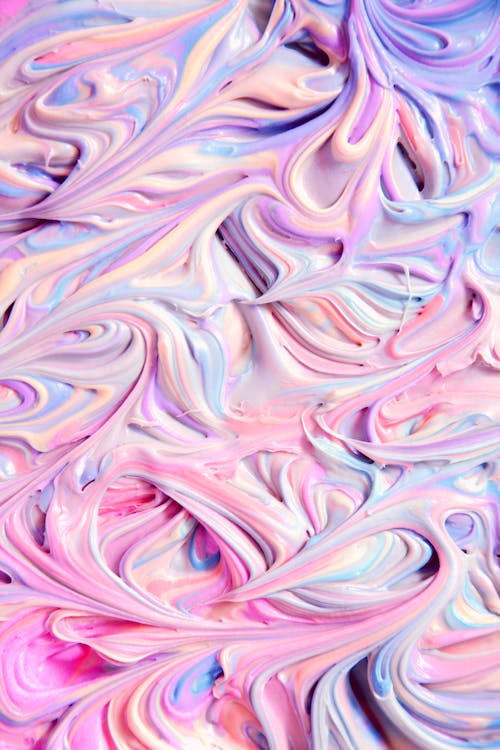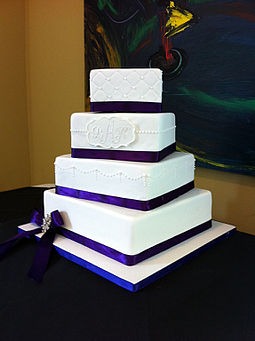Buttercream is a type of frosting or icing with a butter basis that is frequently used as a coating, layering, or decorative cream on cakes and cupcakes. Traditional buttercream is sweet and fluffy and made with Creamed butter and confectioners’ sugar. Other common ingredients include milk (to produce perfect texture) and vanilla (for crowd-pleasing flavor).
Different Types of Buttercreams
To impart distinctive flavors and colors, flavoring and coloring are applied. Different varieties of buttercream have been created, including:
1. Ermine buttercream or Flour buttercream
This frosting is older than the original buttercream, but because of its comparable consistency and ingredient list (sugar, flour, milk, butter, vanilla extract, salt), it still belongs to this family. The classic icing for red velvet cake is this lighter, fluffier kind of buttercream.
2. American buttercream
American buttercream is the type of buttercream that most people are accustomed to. This variation simply needs butter, confectioners’ sugar, and vanilla essence to be made. American buttercream is the best type of frosting to use for decorating desserts because of its spreadable texture and ability to be piped.
American buttercream is made by softening the butter and gradually blending it until it is whipped. When the butter has reached the ideal whipped texture, add the sugar and vanilla, and combine them until the mixture is smooth and uniform.
3. French buttercream
This sort of buttercream is a less-sweet alternative to American buttercream. It is custard-like and as rich as you would expect from a variety of French frosting.
French buttercream is ideal for filling and decorating cakes since it is so simple to pipe and be distributed. Due to the inclusion of butter, pasteurized egg yolks, sugar, and vanilla extract, French buttercream has a noticeably yellow color.
This variation is made by whipping the egg yolks until frothy. After that, stir sugar, water, and salt together until they resemble syrup. Then, use a mixer to blend the two. Add the butter once the cream has been beaten, then the vanilla extract.
4. Russian buttercream
This buttercream is the lightest of them all, with a consistency similar to whipped cream. It has whipped butter added to a foundation of sweetened condensed milk. Sweet, straightforward, and delicious.
5. Swiss Meringue buttercreams
Swiss meringue buttercream, known for its famed light, fluffy texture, is best used for frosting rather than decorating. It is somewhat less sweet and lighter in texture than other types of buttercreams.
It takes skill to make Swiss buttercream. Egg whites, salt, and sugar should first be combined in the bowl of a stand mixer before being whisked over a kettle of hot water. After that, move the bowl to a stand mixer and stir it with the whisk attachment until it has cooled. Finally, add butter to the mixture and beat it using a paddle attachment. Add vanilla and fully blend.
6. Italian Meringue buttercream
Another well-liked type of frosting is Italian buttercream, which is fluffy, smooth, and especially good for piping. It works beautifully as a filler between layers of cakes and is more buttery than sweet.
7. Korean buttercream
Korean buttercream uses cold butter as one of its ingredients, just like Italian meringue buttercream does. Despite being a little distinction, this significantly changes the feel of the finished result. Aesthetically attractive is the glossy appearance of Korean buttercream.
8. German buttercream
German buttercream could be for you if the mere mention of custard drives your taste buds into a frenzy. This kind is smoother and more buttery than American and meringue buttercreams, making it a gentler substitute.
Buttercream can be used as a filling, decoration, or frosting. Buttercream can be used to cover cake layers, top cupcakes with a dollop, or pipe creative designs.
Origin or Buttercream Icing
Cake icing was first used in the 17th century. However, they were created using sugar and egg whites. The use of buttercream as a frosting was introduced in the 20th century to take the place of conventional boiled icings.
Today, buttercream is one of the frostings or icings that is most often used in baking all over the world.
Does Buttercream Need to be Refrigerated?
Buttercream frosting lasts around three days on the counter. The high sugar level prevents it from going bad right away even if it contains perishable components. You will need to refrigerate it after around 72 hours.
How to Store Buttercream?
The buttercream may be kept at room temperature for up to three days in an airtight container; just be sure to keep it in a cool, dark place. If you do not intend to use the buttercream within three days, store the airtight container in the refrigerator. It will keep for approximately a week in the refrigerator.
The buttercream might need to be whipped with a whisk or hand mixer to restore it to its former fluffy glory because it will probably stiffen in the refrigerator.
Ingredients for Buttercream
- unsalted butter (at room temperature)
- sifted confectioner’s sugar
- pure vanilla extract
- heavy cream
- food coloring
- salt
How to make Buttercream Icing?
1. Start by putting your butter out in advance so it can soften. The icing will be smooth and creamy as a result. Two sticks of unsalted butter, approximately 1 cup or 230 grams, are required. Just enough time to make sure the butter is smooth—about 1 minute. For this recipe, either a stand mixer or a handheld mixer will work just fine!
2. The powdered sugar is then added and combined. Usually, you make a batch of this frosting with 3 cups of powdered sugar. It has been discovered by some bakers that 3 cups of powdered sugar is all you really need, despite some recipes calling for far more.
Note:
Mix the butter and powdered sugar together slowly at first to prevent spilling the mixture all over the place. To make things simpler, you can add the powdered sugar 1 cup at a time.
After combining the butter and powdered sugar, add the heavy cream, vanilla extract, and a pinch of salt. To ensure sure everything is thoroughly incorporated, pause, scrape down the sides of your bowl as necessary, and then re-mix.
Simple, right? This frosting is now ready to be piped onto cupcakes or used to decorate a cake. However, you may keep it in the fridge until you are ready to use it.
Using Buttercream to Frost Baked Goods
Even though buttercream is a result, we seldom consume it on its own. When preparing a cake, it may be used to frost the outside and spread between layers to create a variety of finishes, from a smooth to a fluffy, rustic finish. To create delicate borders, it may also be gently piped around the cake’s top and bottom edges. For a more handmade appearance, it may be spread with a metal spatula or piped into cupcakes using a variety of piping tips.
Spreading buttercream over brownies, stuffing macarons, slathering it on whoopie pies, and sandwiching it between cookies are a few less apparent applications for it.
Can Buttercream be used in Wedding Cakes?
Buttercream icing is the icing everyone knows and loves. The frosting that everyone is familiar with and enjoys is buttercream. It has a soft, delicate consistency and is composed of butter, icing sugar, and vanilla seeds. Additionally, buttercream frosting may be colored and flavored to your preferences by using chocolates, fruit flavors, caramels, and so much more! Everyone is familiar with this frosting because it is frequently used on cupcakes, birthday cakes, or even wedding cakes.
It is advised to use buttercream frosting if you want a less formal, casual, or rustic wedding cake. We can effortlessly pipe elaborate flowers, borders, and decorations into your cake using buttercream since it is so delicate. Buttercream is also excellent for adding rosettes and ribbing to cakes. Even though fondant will always appear more finished, some individuals genuinely enjoy the textured aesthetic that buttercream frosting provides.
However, if you are planning a summer wedding, be careful of choosing buttercream frosting since it melts extremely rapidly and can only be used if the cake is stored and served in a cool, air-conditioned setting.
Conclusion
Buttercream is another type of icing that may be used for wedding cakes if you want a traditional and less formal theme. But be mindful that buttercream frosting melts easily, especially in tropical climates. There are also different types of buttercreams that you can choose depending on your taste.



